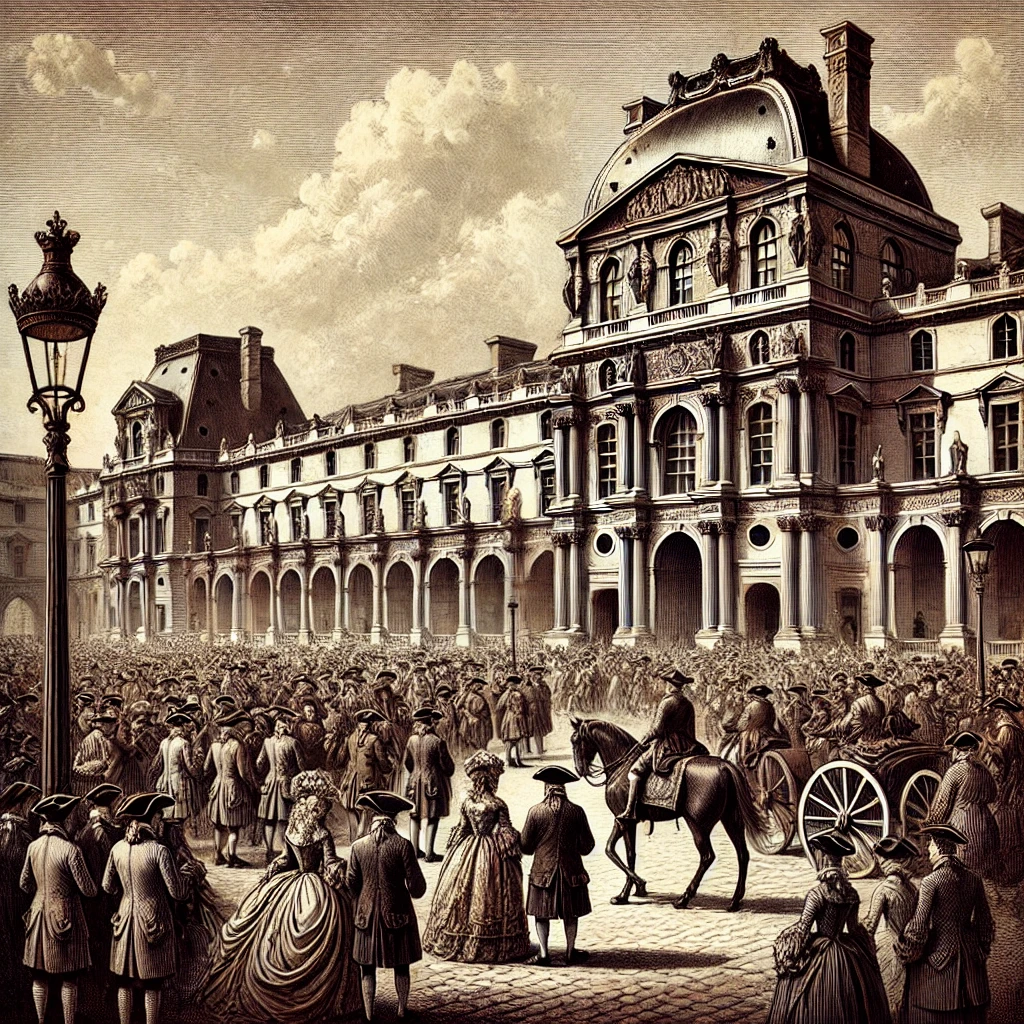On August 10, 1793, the Louvre Museum officially opened its doors to the public. Originally built as a royal palace in Paris, the Louvre was transformed into a museum during the French Revolution, a symbol of the new republic’s commitment to public access to art and culture. The opening of the Louvre marked a significant shift from its previous role as a royal residence to its new function as a public institution dedicated to preserving and showcasing art.
The museum’s origins date back to the late 12th century when it was first constructed as a fortress by King Philip II. Over the centuries, the Louvre underwent numerous renovations and expansions, evolving from a medieval fortress into a grand Renaissance palace. The decision to convert it into a museum was part of a broader movement to democratize access to art and make cultural treasures available to all citizens, reflecting the revolutionary ideals of the time.

The Early Collection and Exhibits
At the time of its opening, the Louvre’s collection consisted primarily of works confiscated from the French monarchy and nobility. The initial display included a range of artworks, from ancient sculptures to European paintings, reflecting the museum’s commitment to showcasing a diverse array of artistic styles and periods. The early collection was intended to represent the cultural heritage of France and Europe, setting the stage for the Louvre’s role as a major cultural institution.
Among the first pieces displayed were significant works from the royal collections, including masterpieces by Italian Renaissance artists and classical sculptures. The museum’s early exhibitions laid the groundwork for its future as a repository of some of the world’s most renowned artworks. The Louvre’s evolution from a royal collection to a public museum marked a key moment in the history of art institutions and their role in society.

The Louvre’s Impact and Legacy
Since its opening, the Louvre has become one of the world’s most famous and visited museums, renowned for its extensive collection of art and historical artifacts. The museum’s significance extends beyond its impressive collection; it has played a pivotal role in the preservation and presentation of cultural heritage. Over the years, the Louvre has continued to expand its holdings, acquire new works, and undertake major renovations, solidifying its status as a global cultural landmark.
The Louvre’s impact on the art world and public access to culture has been profound. It has set a standard for museum practices and continues to influence the development of art institutions worldwide. The museum’s commitment to education, research, and conservation reflects its ongoing dedication to fostering appreciation for art and preserving cultural heritage. The Louvre’s legacy is a testament to the enduring power of museums in shaping cultural understanding and enriching public life.

The opening of the Louvre Museum on August 10, 1793, marked a transformative moment in the history of art and public institutions. From its origins as a royal palace to its current status as a leading global museum, the Louvre has played a crucial role in preserving and presenting art and cultural heritage. Its impact extends far beyond its walls, influencing art institutions and public access to culture around the world. The Louvre remains a symbol of the enduring value of art and the importance of making cultural treasures accessible to all.
